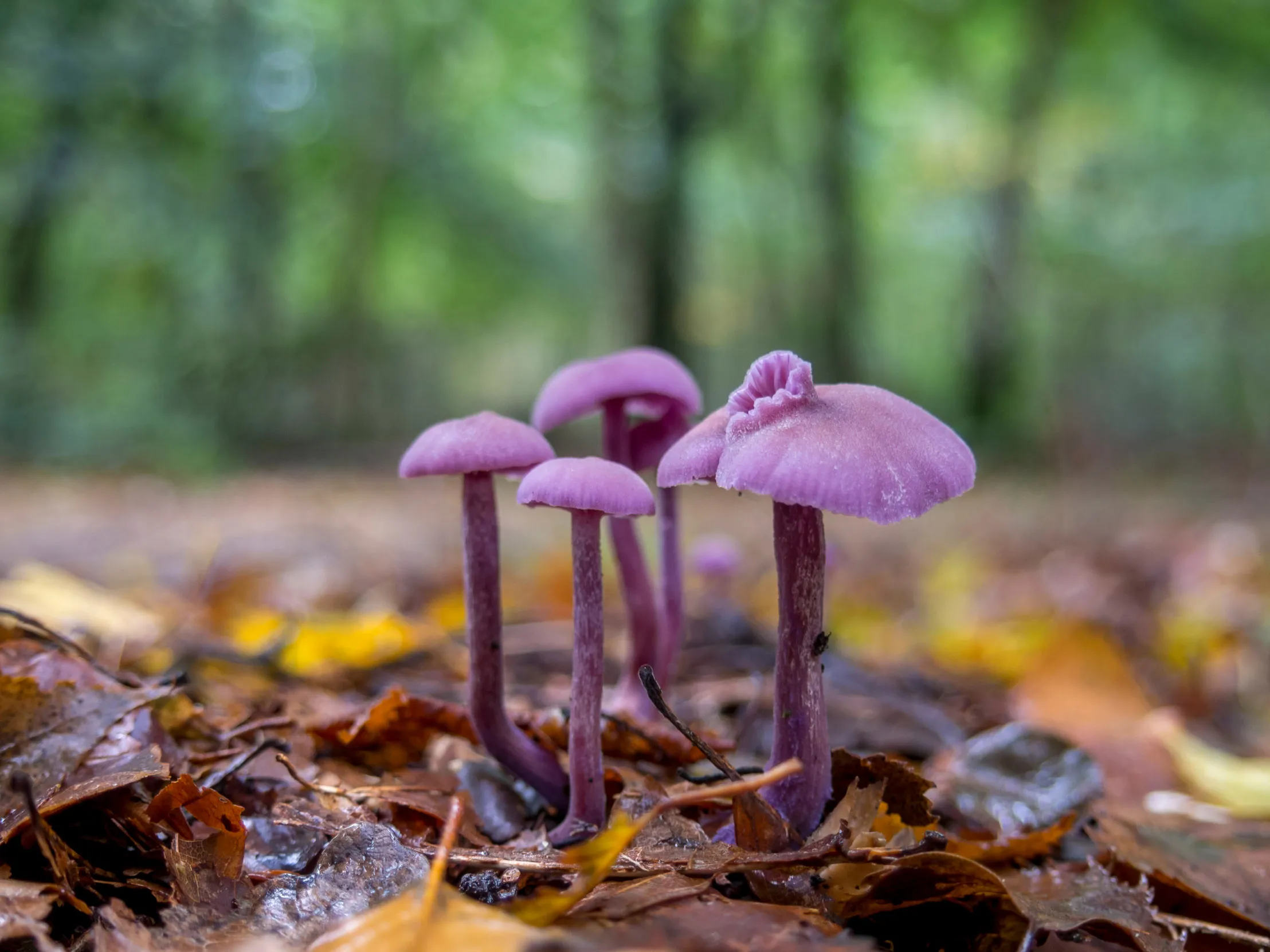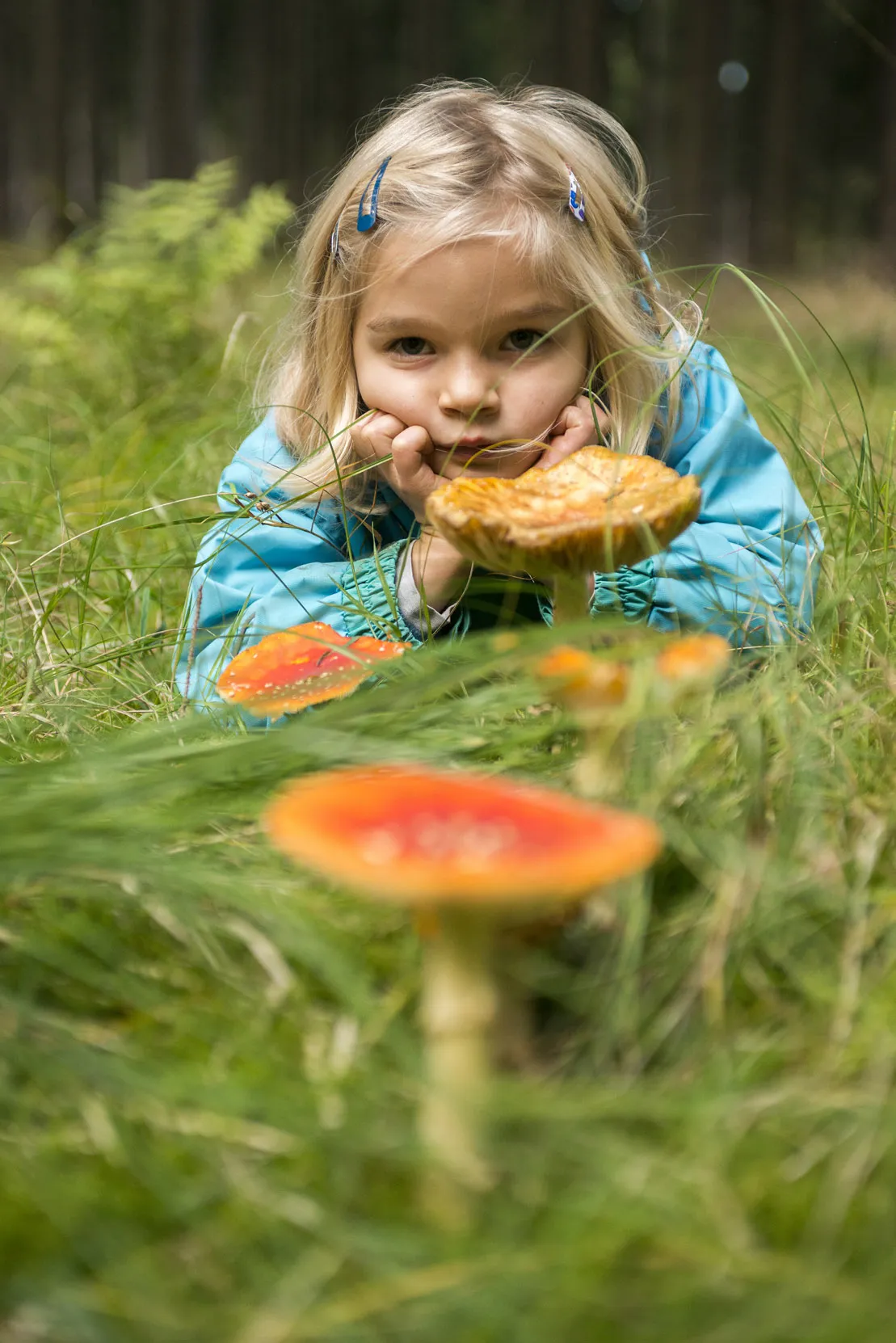Fabulous fungi
Go on the hunt for fabulous fungi. How many different shapes, colours and sizes can you spot?

Fungi are all around us in nature. They’re mostly hidden from view, underground, waiting to appear.
When cooler temperatures and a spot of rain arrives, they grab their chance sending their fruiting bodies bursting from the ground in a bizarre array of shapes and colours, from Toadstools to Puff-balls. They have some great names too, from The Amethyst Deceiver to Deadman's Fingers.
There are a few fungi that can be eaten, but some are poisonous so it's best not to touch or pick them. Instead, learn where you're most likely to see them and appreciate them in their natural habitat in all their weird and wonderful forms.
Did you know:
There are more than 100,000 species of fungi!
Instructions
Find your fungi
Fungi grow in lots of places, but they all need damp conditions to survive. You’ll often see them in rotting tree stumps and damp soil near living trees. Puffballs grow in grassy fields, so look out for big white blobs while walking through them, you might also spot the magical shape of a Fairy Ring. Remember to look up as well as down at the ground when on your mushroom mission. Many fungi like the Jelly Ear Fungus grow on dead branches.

See how many fungi bingo sheet matches you can find
You'd be super-lucky to see all of them, but if you do, make sure you shout bingo. Remember not to touch the fungi. As well as being delicate and easily damaged, some are poisonous. It’s best to stay safe by looking at them rather than touching. If you do touch fungi, remember to wash your hands thoroughly afterwards or before eating.
